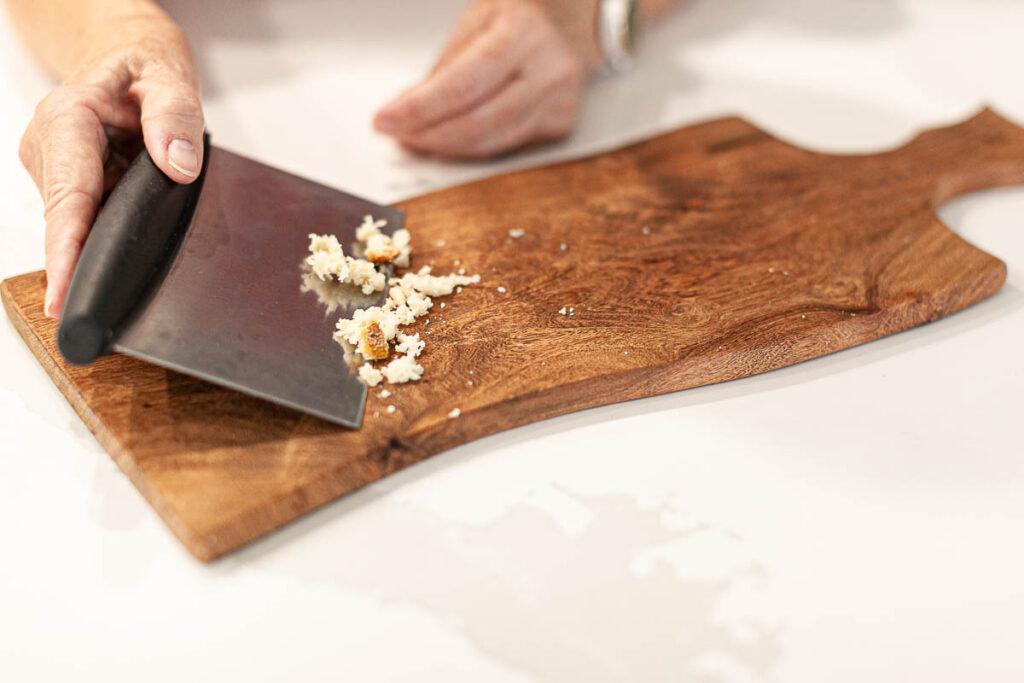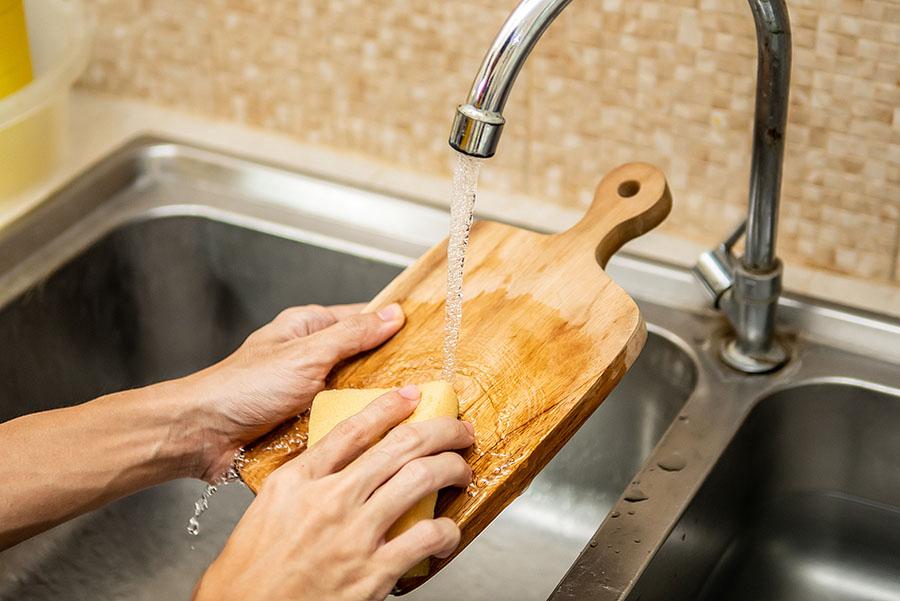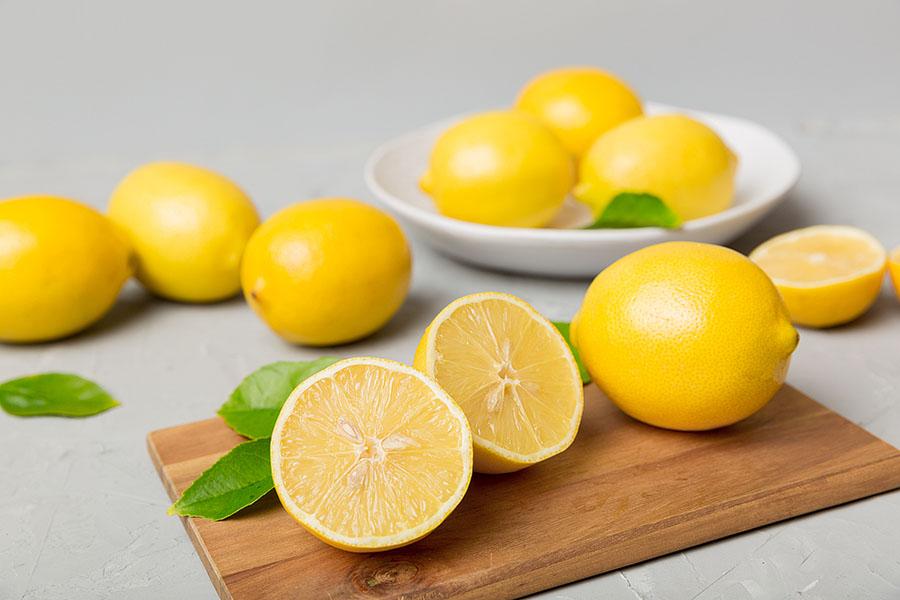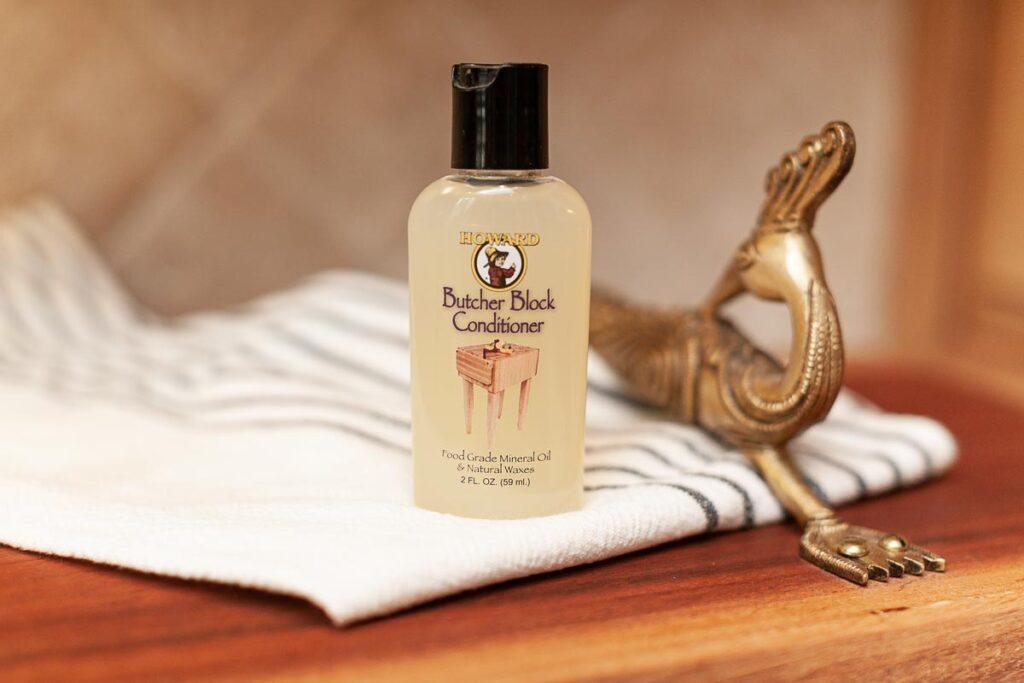Everyone loved your charcuterie board. Now the party’s over. The guests have gone home. Now how to clean your charcuterie board and what does proper charcuterie board care look like?
Here at Forks Corks and Brews we’ve had a bunch of experience cleaning all types of food from our cutting boards and charcuterie boards. Follow along with these easy steps as we explain how to clean a charcuterie board and get it ready for your next party or gathering.
In this YouTube video we show you proper charcuterie board care. In addition the video explains how to properly clean your charcuterie boards and wood cutting boards.
First Step to Cleaning Your Charcuterie Board
Before you actually start to clean your charcuterie board here is what you should do first. These steps are the same if you are cleaning one of your cutting boards.
- Remove all the leftover food.
- Put away any food that is still good.
- Discard all meats and cheeses that have been sitting out for a few hours.
- Discard any leftover fruit that doesn’t look good. (We compost ours.)
- Save any nuts, olives, and jams that are still good.
- Discard parchment paper if you used it. (Brown parchment paper can go in compost. White parchment paper goes in recycle if it’s clean.)
Second Scrape Crumbs Off with a Bench Scraper
Proper charcuterie board care begins with using a bench scraper to gently remove any dried-on jams, cheese, salt, or leftover sticky mess. Use a flat-edged spatula if you don’t have a bench scraper.
Hold the bench scraper at a 45 degree angle and lightly scrape the crumbs off the charcuterie board. You can scrape the crumbs off into a separate bowl, a trash can, or your kitchen sink.
Remember to lightly scrape your charcuterie board. You don’t want to make scratch marks. You want to keep it scratch-free especially if you use it for displaying your favorite charcuterie foods.
If you are using one of your cutting boards that already has knife marks in it, then you don’t have to be quite as careful with the bench scraper.
If you don’t have a bench scraper here are some options for you on Amazon. We recommend these bench scrapers below.
Sometimes we use our cutting boards for charcuterie, which is why it’s important to clean it before the next use.

Third Step Use Warm Water to Properly Clean Your Charcuterie Boards
When all the food and crumbs are gone, using warm water is an important step when learning how to clean a charcuterie board.
- Lay the board on a flat surface close to your sink.
- Grab a clean towel to use for drying your charcuterie board.
- Use warm water and a soft sponge.
- You can also use a clean wash cloth or other towel for cleaning.
- Put your sponge or towel in the hot water.
- Wring out extra water from your sponge or towel.
- Gently clean your board until all food particles are gone. (Do not soak your charcuterie board.)
- We suggest staying away from using steel wool. It could leave scratch marks on your wooden board.
- Steel wool can be used if your cutting board already has knife marks. Very lightly rub your wood board while using warm water to rinse your board.
If you are using a small cutting board like the one shown here, you can run it under hot water and rub the board until all the food particles are gone. Turn the water off and grab a clean absorbent towel or paper towel and dry the cutting board right away.

Fourth Step Remove Stains
Eventually one of your charcuterie boards or cutting boards will get stains. When this happens, use the following steps on how to clean your charcuterie board.
- Use 1 teaspoon of baking soda.
- Use 1/4 teaspoon of water.
- Mix baking soda and water into a paste.
- Find your stain.
- Gently rub the baking soda paste on the stain.
- Wipe the paste off with a damp cloth. (You may need to wipe more than once or twice. Make sure you rinse your cloth and wring out all the water before wiping again.)
- If you have a tough stain or oil stain repeat these steps and add a small drop of dish soap to the paste.
- Make sure to thoroughly wipe your board with a clean cloth and hot water. You can also use to rinse your board thoroughly with hot water after using dish soap
Another Way to Clean Stains Off Your Charcuterie Boards
- Find a lemon.
- Cut the lemon in half.
- Squeeze the lemon juice directly onto the stain.
- Sprinkle 1/8 teaspoon of salt onto the juice where the stain is, then using the lemon like a sponge or cloth rub directly into the stain.
- Gently rub the lemon juice and salt into the spot where the stain is. You can use your finger, a small silicon spatula or use the 1/2 lemon like a sponge and rub it into the cutting board.
- If you have a tough stain repeat these steps.
- Wipe the lemon juice and salt off with a damp cloth. You can do this step more than once.

Final Step: Towel Dry Your Charcuterie Boards
Make sure you follow these instructions. Once we have a clean charcuterie board and all the stains are removed, we dry it. First we towel dry it using a microfiber or lint free cloth. Finally we let it air dry.
A damp board might have a tendency to warp or discolor. Also mold likes dark, damp places. You don’t want your charcuterie board to get moldy so air drying it is really important.
If you live in a humid climate it will take your charcuterie board longer to dry versus if you live in a dry climate. Leave your board to air dry overnight if you are unsure about how long it needs to dry. Remember do NOT put your board in or near direct heat.
- Find a soft absorbent towel or two and wipe dry. A microfiber towel or lint free cloth is best. You can also use paper towels but we recommend using re-useable cloth towels.
- Use the towel to thoroughly towel dry your board.
- Put the charcuterie board on a flat surface where it can sit for an hour or two. We prop our board up on its side in our kitchen until it is dry. If you cannot prop your board up just leave it sit out where it can dry.
- Let your charcuterie board sit out in a well ventilated area.
- Do not put your charcuterie board out in the direct sun.
- Do not put your board near or on direct heat. This will warp your board.
- Make sure your charcuterie board is completely dry before storing it.
- If you are unsure when your board is fully dry, let it dry overnight or let it dry for 4-6 hours.
Use Food Grade or Food Safe Mineral Oil for Proper Board Care
Take a good look at your charcuterie board. Is it too dry? If so, it’s time to oil it using food grade mineral oil or food safe mineral oil. If you just cleaned any of your charcuterie boards with water, let them sit out over night before using food grade mineral oil on your board. That way, it will be completely dry.
Conditioning your wooden boards means oiling them. It’s the last step in proper care for kitchen items made from wood. You should condition your wooden utensils and wooden bowls as well.
As a rule of thumb oil your wooden boards every 4-6 weeks or after every 3rd or 4th use. Stay away from vegetable oils; they are for cooking only.
It’s important to take proper care of your wood board and using food safe mineral oil or another food safe wood conditioner is part of proper board care. Knife marks and scratches give bacteria and food particles a place to hide. Conditioning your wood board will make it easier to clean and will keep it safer to use. High quality balms make the wood fibers swell and thus healing scratches and knife marks.
- Find food-grade mineral oil, butcher block conditioner, or Walrus Cutting Board Oil. Personally we stay away from flaxseed oil or hemp oil due to people’s allergies. You don’t want to serve food on a wooden board that has been oiled with flaxseed oil if someone is allergic to flaxseed.
- Make sure the label clearly says “Food-Grade.”
- Find 2 lint-free cloths.
- For a wood board that is 12 inches by 24 inches use a tablespoon of food grade oil.
- Put the food grade mineral oil on your cloth or directly on the board.
- Wipe the oil into the wood board in the direction of the wood grain. You want the food grade oil to fully penetrate the wood fibers.
- Let the oil sit for about 10-15 minutes.
- With the 2nd cloth wipe the excess oil away.
- With your hand rub the board. Your hand should not be oily. If your hand is oily after rubbing the charcuterie board use the cloth to wipe it agin.
- With charcuterie boards you need to oil the top and the sides.
- You will need to oil your board when it looks dry or every 3rd or 4th use.
- Once your charcuterie board has been oiled you can store it.
- NEVER EVER EVER use vegetable oils to condition your wood board.
Another conditioner you can use in place of food grade mineral oil is Clapham’s food-safe salad bowl finish. Made in a dedicated nut free facility with organic carnauba wax, pure beeswax from the Peace River Valley, and natural mineral oil, Claphma’s food-safe salad bowl finish is suitable for all things wood in the kitchen.

How to Prevent Stains on Your Charcuterie Boards
The best way to prevent stains on your charcuterie boards is to use parchment paper. Place the paper on your board where you want to put food. Then add food on top of the parchment paper. You can cut and shape the paper exactly where the food will go.
Remember proper charcuterie board care with cleaning and using mineral oil on your wood charcuterie boards. Mineral oil will help prevent stains from getting deep into the wood fibers.
One of the most important things to remember with proper charcuterie board care is to stay away from using any type of vegetable oils on your wood board.
What Kind of Parchment Paper Should I Use?
The two types of parchment paper are bleached and unbleached. Bleached parchment paper is white and unbleached parchment paper is brown.
Because charcuterie boards are usually shades of brown, we use brown parchment paper. The brown paper blends with the wood color better. Also brown parchment paper is compostable and better for the earth.
If you are using a marble or white stone charcuterie board you can use white parchment paper. Typically we use parchment paper with wood boards and not stone charcuterie boards.
Want to know what type of wine to pair with your charcuterie board? Check out our suggestions on what wine goes well with charcuterie.
Do you want to make your own charcuterie board? Follow our suggestions on the best material for a charcuterie board.

 Chanel earrings, CC dangle earrings in water drop shape adorned with stones and pearls v39
Chanel earrings, CC dangle earrings in water drop shape adorned with stones and pearls v39 